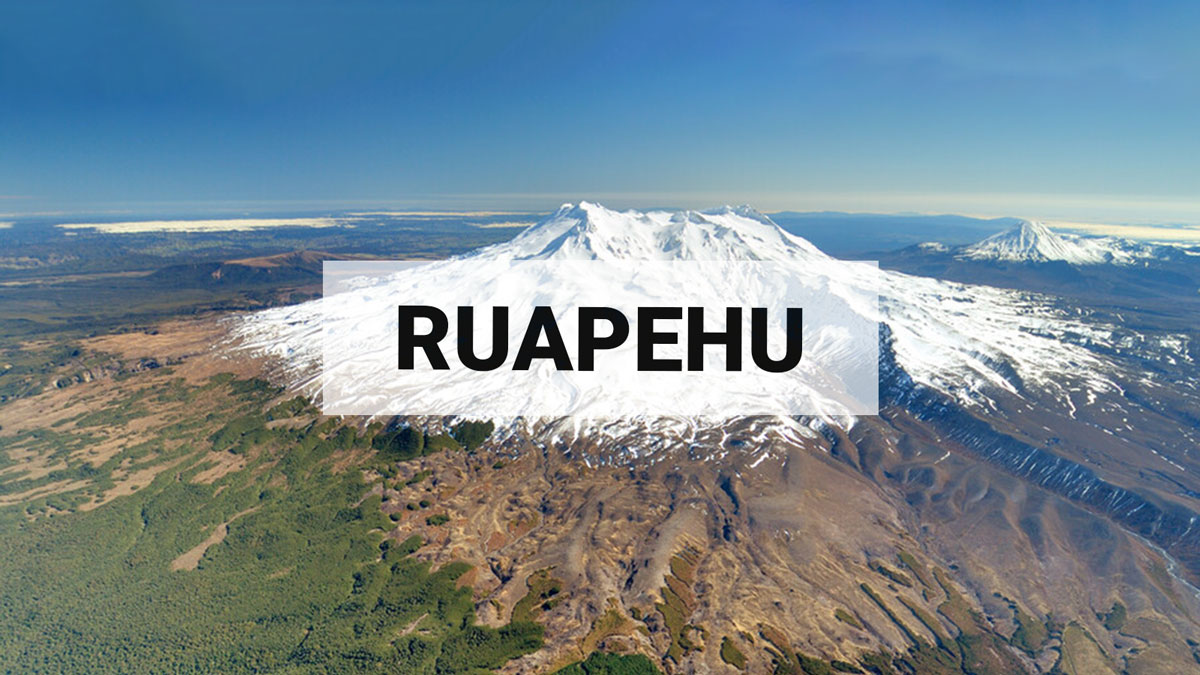
Volcanic gas detected and strong tremor continues at Mt Ruapehu: Volcanic Alert Level remains at Level 2.
Recent gas measurements reveal very high levels of volcanic gas emissions, along with strong volcanic tremor. Crater Lake (Te Wai ā-moe) temperature has risen to 38°C. The Volcanic Alert Level remains at Level 2.
Elevated volcanic unrest has been sustained at Mt Ruapehu for four weeks. This heightened unrest is primarily manifested as volcanic tremor and heat flow into the summit crater lake. The tremor levels remain elevated, representing the longest period of tremor recorded over the past 20 years. An observation flight and sampling of the crater lake were performed last week to further assess the activity. Our scientists observed some upwelling in the lake, indicating that hot gas and liquid are still making their way into the lake. The crater lake remains a battleship grey colour with upwellings only at the northern vents area and no overflow. Sulphur slicks are also present on the lake surface. All these characteristics are usual for Ruapehu crater lake during a heating phase.
The Crater Lake (Te Wai ā-moe) temperature is now 37 °C. Our modelling suggests that about ~230 MW of heat is required to sustain this high lake temperature. Temperature and heat input remain within the typical range for a heating cycle. Over the past 30 days, the lake temperature increased by 7°C, which is like previous heating phases. But the heating has slowed down and temperatures have now been steady around 37 °C for the last week. This slowing of the heating, in spite of the ongoing strong level of volcanic tremor continues to indicate heightened volcanic unrest as pressure could be building up at depth.
The sustained nature of the volcanic unrest, coupled with the volcanic tremor signals, elevated gas output and hot lake remain indicative of processes being driven by molten rock (magma) interacting with the geothermal system within the volcano.
The order of the potential outcomes has not changed since last week. The most likely outcome of this unrest episode within the next four weeks is still that no eruptive activity occurs, as no eruptions have followed unrest in the past 15 years. However, there is also a possibility of a single or multiple eruptions that could impact the summit area and generate lahars into some catchments draining off the volcano, especially the Whangaehu Valley. The size of these eruptions, if they did occur, would probably be like that of September 2007, or the slightly larger April 1975 or June 1969 events.
The chances of a prolonged and larger eruption, such as occurred in 1995-96 with wider ashfall impacts, is higher than it was two months ago, but remains very unlikely. Such an eruption would most likely only follow a sequence of smaller eruptions.
The interpretation of this activity is consistent with elevated volcanic unrest at the heightened level and therefore the Volcanic Alert Level remains at Level 2. The Aviation Colour Code remains at Yellow.
Mt Ruapehu is an active volcano and has the potential to erupt with little or no warning when in a state of elevated volcanic unrest.
The Volcanic Alert Level reflects the current level of elevated volcanic unrest. The Volcanic Alert Level should not be used to forecast future activity. However, at Volcanic Alert Level 2, eruptions are usually more likely than at Volcanic Alert Level 1.
Volcanic Alert Level 2 indicates the primary hazards are those expected during volcanic unrest; steam discharge, volcanic gas, earthquakes, landslides and hydrothermal activity. While Volcano Alert Level 2 is mostly associated with volcanic unrest hazards, eruptions can still occur with little or no warning.
For information on access to the Mt Ruapehu area, please visit the Department of Conservation’s websites on volcanic risk in Tongariro National Park and follow the DOC Tongariro Facebook page for further updates.
For information about responding to volcanic activity there are guidelines from the National Emergency Management Agency's Get Ready website.
GNS Science and its National Geohazards Monitoring Centre continue to closely monitor Mt Ruapehu for further changes.
Agnes Mazot
Duty Volcanologist
Media Contact: 021 574 541 or media@gns.cri.nz